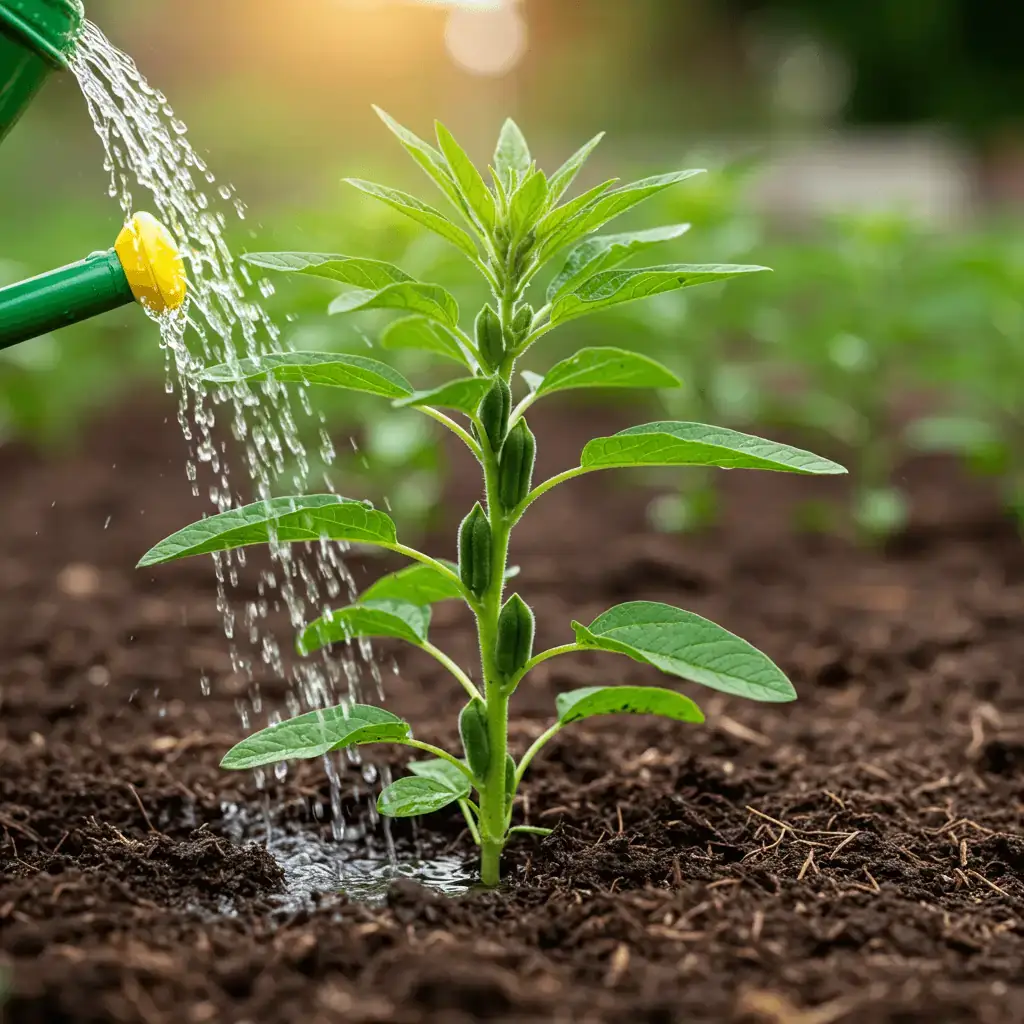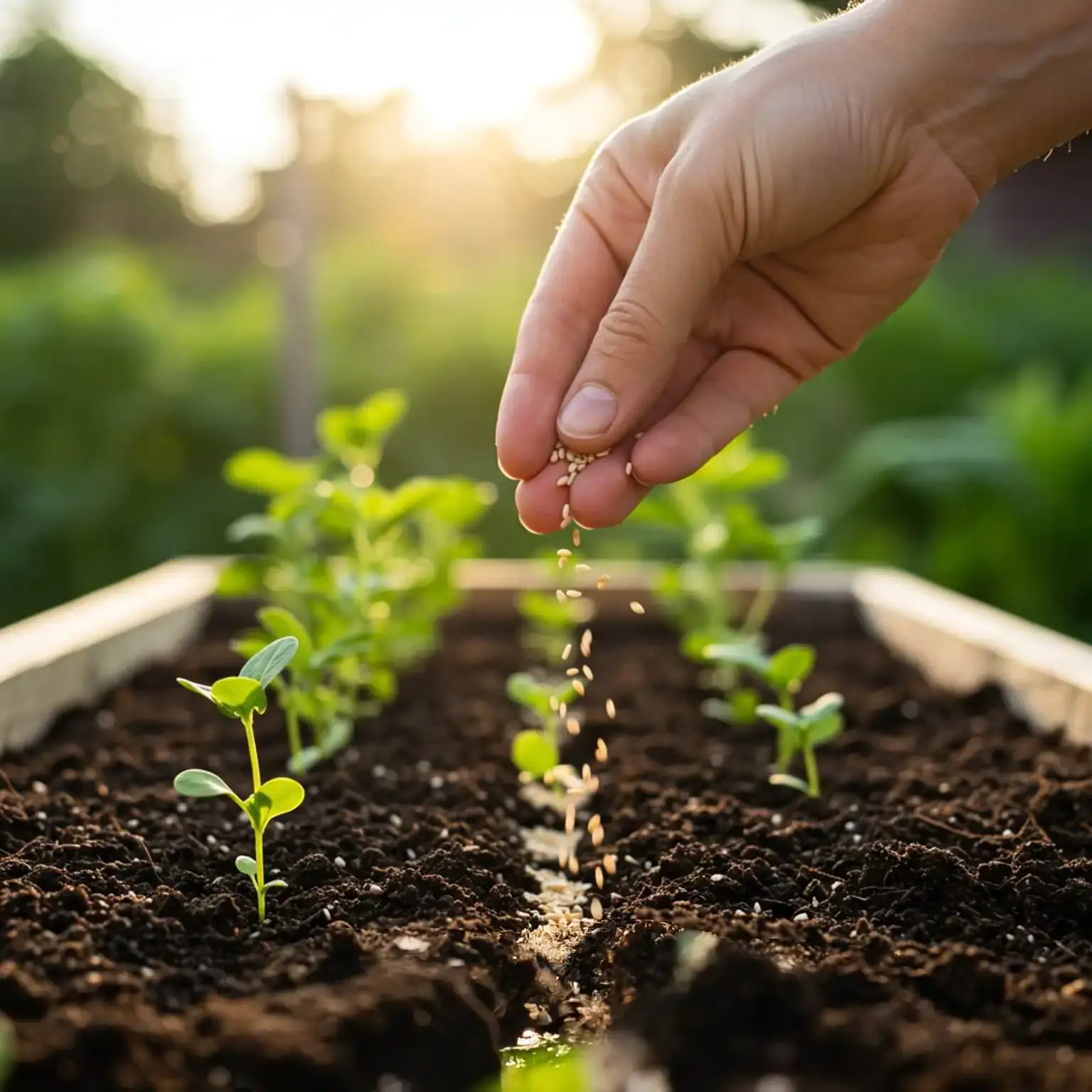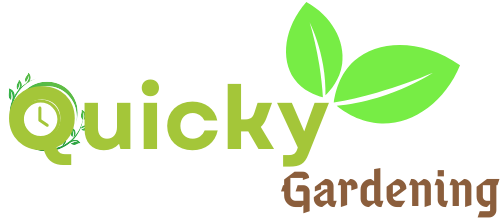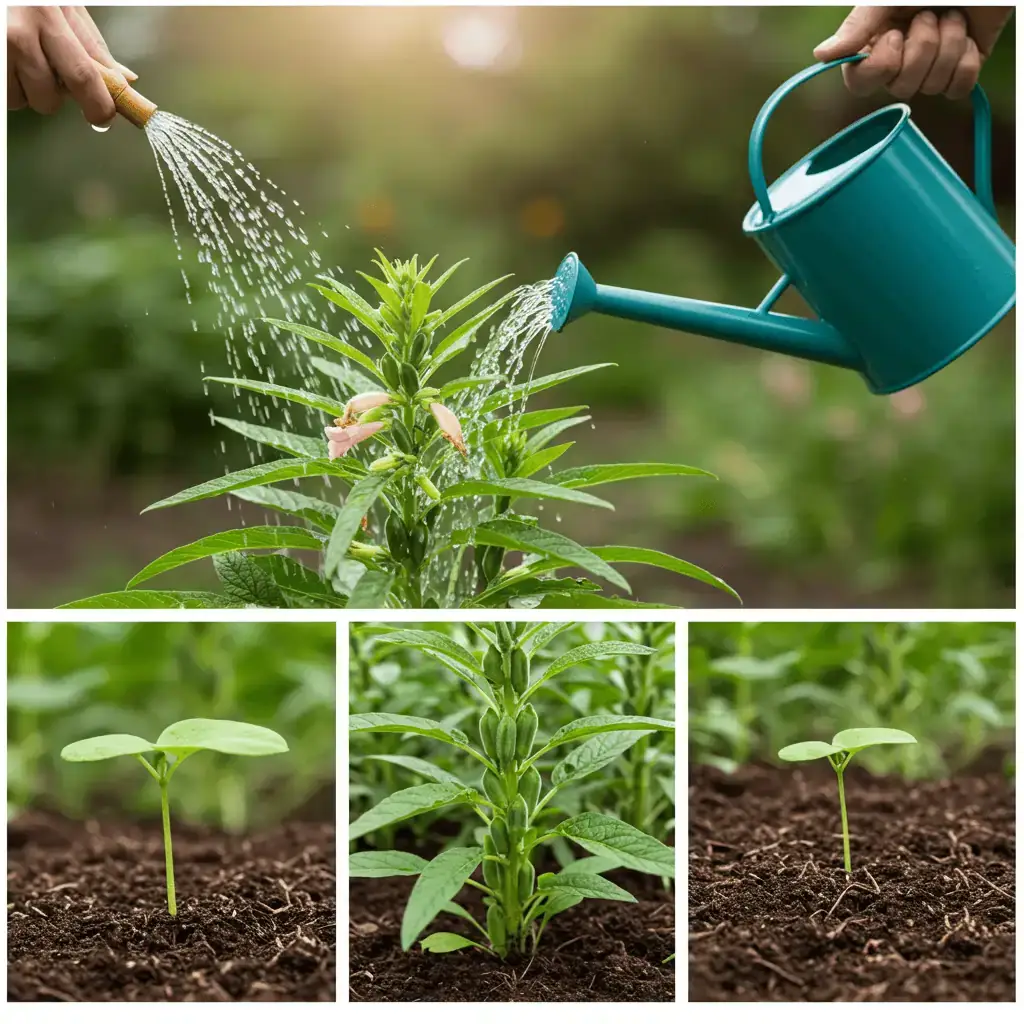Welcome to your ultimate guide on sesame seed plant care. This guide is for both new gardeners and seasoned growers. It offers practical steps to grow healthy sesame seed plants. We cover everything from planting to harvesting to ensure your plants flourish.
Learn how to create the perfect environment for your sesame seed plant. Find out about the best soil, watering, and sunlight. This guide also talks about the plant’s history, common problems, and advanced growth techniques.
By following these tips, you’ll boost your chances of a successful harvest. Let’s explore the world of sesame seed plant care together and help them reach their full potential.
Understanding Sesame Seed Plants
Ever wondered, “What kind of plant do sesame seeds come from?” The sesame plant, Sesamum indicum, is a hardy annual herb from Africa and India. It’s been grown for over 3,000 years, making it one of the oldest oilseed crops. It was prized in ancient places like Mesopotamia and Egypt.
These plants love warm weather and can grow up to 5 feet tall. They have delicate flowers that turn into seed pods.
The Origin and History of Sesame Plants
Sesame’s story is long and wide. It was first grown in the Indus Valley around 2000 BCE. The Bible even calls it a symbol of longevity.
Its hardiness made it a key part of traditional medicine and food around the world. Today, it’s a major crop in India, China, and Tanzania, known for its oil and seeds.
Identifying Different Sesame Varieties
Not all sesame plants are the same. There are a few main types:
- Black Sesame: Dark seeds full of calcium, great in Asian desserts.
- White Sesame: Common in baking, with a mild taste and light color.
- Golden Sesame: Sweet and nutty, loved in Middle Eastern dishes.
Each type grows the same way but has its own health benefits. Knowing these differences helps pick the right one for your garden or cooking.
Soil, Water, and Light Requirements

To make your sesame plant happy, start with the basics. You need the right soil, regular water, and enough light. Knowing your sesame plant growing zone helps match these needs with your area’s climate and soil.
Best Soil Conditions for Growth
Sesame plants love soil that drains well to avoid root rot. Here’s how to get it right:
- Go for sandy loam or loamy soil that drains well
- Keep the pH between 6.0 and 7.5 for best nutrient uptake
- Stay away from heavy clay soils unless you mix in compost or sand
Optimal Watering Techniques
How you water affects your plant’s growth. Here’s what to do to avoid too much water:
- Water deeply once a week, letting the soil dry in between
- In humid places, water less to avoid fungal problems
- Use mulch to keep moisture in during hot times
Sunlight Exposure and Environmental Needs
Sesame plants do best in sunny, warm spots. Think about your sesame plant growing zone when picking a spot:
- Give them 6-8 hours of direct sun each day
- They grow best in USDA zones 8-11
- Keep them away from frost; they need temps over 60°F (15°C) to grow
- In cooler zones, use raised beds for better drainage and warmth
Essential Nutrients and Fertilization
Sesame seed plant care needs balanced nutrients for growth and yield. Key nutrients like nitrogen, phosphorus, and potassium (N-P-K) help with leaf, root, and flower growth. For nutrient-rich soil, choose a fertilizer with a 10-10-10 N-P-K ratio during the growing season.
Here are some fertilization methods for the best results:
- Apply compost or well-rotted manure in early spring to boost organic matter.
- Side-dress with a balanced granular fertilizer 4-6 weeks after planting.
- Use liquid kelp extracts every 3-4 weeks for micronutrient support.
“Sesame plants show deficiency signs like yellow leaves or stunted growth when starved of calcium or magnesium,” says USDA crop specialists.
Organic supplements like bone meal (phosphorus) or fish emulsion (nitrogen) are good choices. But, don’t over-fertilize—too much nitrogen can delay flowering. Test soil pH yearly to keep it between 6.0-7.5 for better nutrient absorption.
Pro tip: Mulching with fertilization helps keep moisture in and slowly releases nutrients. This combo strengthens stems and improves seed quality without chemical overload.
Pruning and Disease Prevention
Keeping your sesame plants healthy means paying attention to pruning and stopping diseases. These steps help your plants grow strong and fight off threats. Here’s how to keep your sesame plants in top shape.
Effective Pruning Techniques
Pruning your sesame plants helps with air flow and directs energy to healthy areas. Follow these steps:
- Trim dead or crossing stems with clean shears to reduce disease risk.
- Remove lower leaves once plants reach 12 inches tall to focus energy upward.
- Prune early in the season to avoid stressing mature plants.
Recognizing and Preventing Common Diseases
Spotting problems early stops them from getting worse. Watch out for these common diseases:
- Damping-off: Seedlings topple or rot at the soil line. Prevent by using sterile soil and avoiding overwatering.
- Fusarium Wilt: Yellowing leaves and stunted growth. Remove infected plants and rotate crops yearly.
- Leaf Spot: Brown spots on leaves. Treat with neem oil sprays and remove affected foliage immediately.
Regular checks and quick action keep your plants healthy. Combine pruning with weekly inspections to catch issues early and ensure healthy growth.
Tips for Growing Sesame Seeds at Home

Learning how to grow sesame seeds at home begins with the right setup. Use containers with holes for drainage to prevent waterlogging. Choose pots that are at least 12 inches deep to support the roots. Place plants in sunny spots, like southern-facing windowsills indoors.
Rotate containers weekly to ensure even sunlight exposure.
- Soil mix: Combine potting soil with perlite for drainage. Sesame prefers slightly sandy, nutrient-rich soil.
- Temperature control: Keep indoor temps between 60–85°F (15–30°C). Avoid cold drafts from windows or AC units.
- Watering: Let soil dry 1 inch deep before watering again. Use room-temperature water to prevent root shock.
Harvest when seed pods turn brown and crack open. Wear gloves to protect skin from sap irritation. Trim mature pods with scissors, then dry them indoors for 1–2 weeks before shelling.
“Container-grown sesame thrives with consistent warmth and light. Adjust your space to mimic their native tropical climate,” advises horticulturist Dr. Elena Torres of the National Seed Institute.
Monitor plants daily for pest signs like aphids. Use neem oil sprays as a natural remedy. Adjust humidity with small humidifiers if indoor air is too dry. These steps turn any home space into a thriving sesame garden.
Advanced Sesame Seed Plant Care Strategies
Learning advanced techniques helps your sesame plants grow better than basic care. Making seasonal changes and using nutrients wisely boosts yield and health. Here’s how to improve your care:
Seasonal Care and Maintenance Tips
Change your care with the seasons for the best growth:
- In spring, prepare soil with compost before planting.
- Summer needs regular weeding and mulching to keep moisture in.
- As fall comes, cut back on watering to harden stems. This signals they’re ready for how sesame seeds are harvested at the best time.
Leveraging Additional Nutrients and Amendments
Boost soil health with these steps:
- Use calcium-rich amendments to strengthen seed capsules.
- Apply balanced fertilizer in early growth.
- Add organic mulch to control soil temperature and moisture.
Timing is key for how sesame seeds are harvested. Watch seedpods closely. When they turn brown and split, they’re ready. Gently shake plants over a tray to collect seeds. Don’t harvest too early to avoid immature seeds. Proper harvesting techniques ensure quality and avoid losses. These methods lead to more bountiful and high-quality yields.
Conclusion
Caring for sesame seed plants involves balancing soil, nutrients, and upkeep. Start with well-drained loam and consistent watering to avoid root problems. Make sure they get full sunlight and adjust care with the seasons.
Regular fertilizing and pruning help them grow strong. This also keeps diseases away. Watch out for pests and use natural treatments to protect your crop.
These tips work for any garden size, from small pots to big plots. Keep an eye on soil pH and add nutrients as needed. This care cycle from planting to harvest will make your sesame plants flourish.
With this guide, you’re all set to create a thriving sesame garden. Follow these steps to enjoy a bountiful harvest.
FAQ About Sesame seed plant care
What kind of plant do sesame seeds come from?
Sesame seeds come from the sesame seed plant, known as Sesamum indicum. This plant is mainly grown for its seeds. These seeds are used in cooking and baking.
How are sesame seeds harvested?
Sesame seeds are harvested when the seed pods turn brown and dry. The plants are cut down at this stage. Then, they are dried further and the seeds are removed from the pods by hand or machine.
What is the sesame plant growing zone?
Sesame plants grow best in zones 8 to 11. They need warm weather and lots of sunlight. This makes them perfect for areas with long growing seasons.
How do you grow sesame seeds at home?
To grow sesame seeds at home, pick a sunny spot with well-drained soil. You can plant the seeds directly in the ground or in containers. Make sure they have enough space to grow. Water them often and give them sunlight for the best growth.
What are the best soil conditions for growing sesame seeds?
Sesame plants like sandy or loamy soil that drains well. The soil pH should be slightly acidic to neutral, between 6.0 and 7.5. Adding organic matter to the soil can make it more fertile and structured.
How often should I water my sesame plants?
Sesame plants need regular watering, especially when they’re young. Water them once a week during dry times. But, don’t overwater as too much water can cause root rot.
What common pests affect sesame plants?
Pests like aphids, sesame leafhoppers, and spider mites can harm sesame plants. Keep an eye on your plants and use integrated pest management to control these pests.
Are there specific diseases to be aware of when growing sesame?
Yes, sesame plants can get diseases like root rot, downy mildew, and leaf spot. Watch your plants closely and make sure they have good air circulation to prevent these diseases.
Can sesame seeds be grown in containers?
Yes, you can grow sesame seeds in containers. Use a pot with good drainage and a high-quality potting mix. This will provide the right nutrients and moisture for growth.

